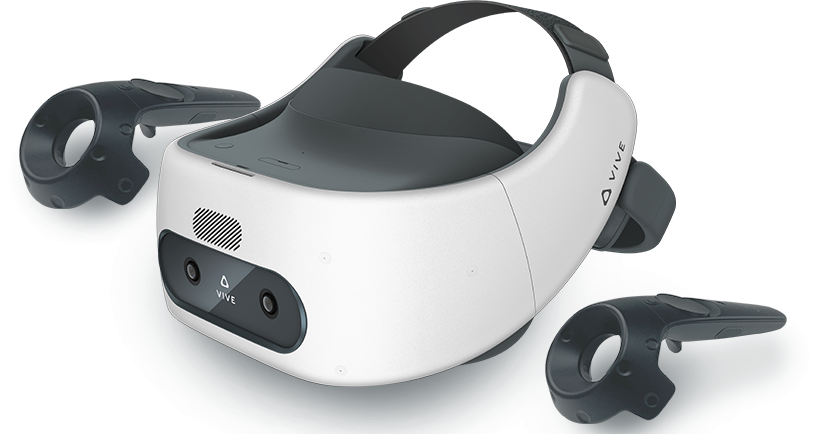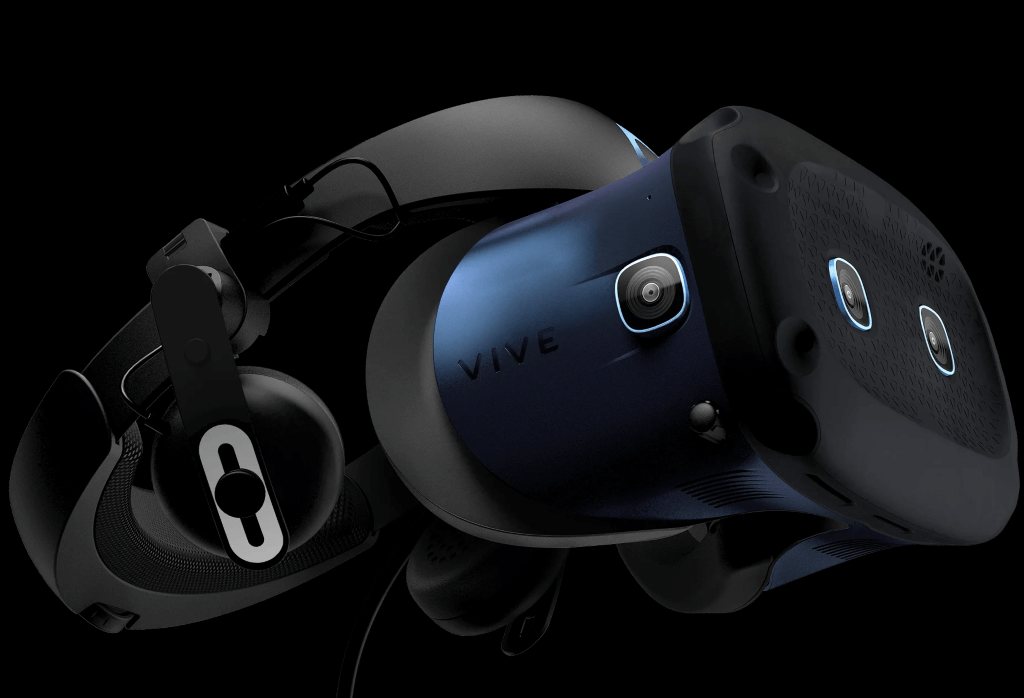With the new year upon us, let’s take a look at the VR headsets that caught our attention in 2019. It’s been a busy year for VR, and we have a lot to work with.
VR headsets are just the tip of the XR iceberg. They’re only a portion of the XR headsets on the market but they’re the most visible and most sought after. If you prefer MR or AR, don’t worry, we have a similar article devoted to AR and MR headsets and glasses.
VR Headsets
Virtual reality means that the entire experience is digitally rendered. That means that it is very difficult to achieve VR without a VR headset.
VR headsets can be categorized in a number of different ways. The method that we’ve chosen for this article has to do with how the headsets handle information. They may have their own on-board processor, or be connected to a computer through a wire or wireless connection.
Standalone
Standalone VR headsets have onboard processors and app databases, kind of like smartphones or smart televisions. They are extremely portable but are more limited than their computer-connected counterparts.
Though we will also be looking at one VIVE headset, Oculus rules the road when it comes to standalone VR headsets. They weren’t actually the first to market (here’s lookin’ at you, Pico Goblin) but they definitely do the best job.
Oculus has a number of standalone models. We’ll be looking at the Quest and the Go. If you want a quicker comparison, Oculus prepared this one themselves.
Oculus Go
The Oculus Go comes in at just $200, making it easily the most affordable wireless VR headset out there. It can do what it does very well but it doesn’t do as much as other headsets. It’s mainly for 3D videos and other basic applications.

Oculus Quest
If you want to do more than that – without hooking to a PC – you’ll need the Oculus Quest. The Quest rings up at twice the price of the Go. That’s the same price as the company’s all-out, PC-based model but portable.
Most of the specs for the Quest are actually the same as the Rift S, which we’ll get to in a bit. The big difference between the Quest and the Go is that the Quest can handle the advanced tracking that allows more immersive VR applications.

VIVE Focus
As we’ll see in the next section, HTC’s VIVE line focuses on models that require a computer. They don’t have as many standalone offerings as Oculus and the VIVE option is, as one can expect, a bit more expensive and a bit more luxurious.
The VIVE Focus Plus comes in at $800 – more than anything made by Oculus. So why the price jump?

The VIVE Focus Plus was introduced as the enterprise version of the consumer VIVE Focus. Due largely to the next-level software, including eye-tracking, the Plus eclipsed its colleague and VIVE discontinued the standard Focus.
Wireless
Most PC-based VR headsets require a cable connection to their PC but wireless headsets don’t. They have all of the power of tethered headsets without a cable to get in the way.
VIVE Pro
HTC’s VIVE is lining itself up as the Cadillac of VR headsets. VIVE Pro is the only entirely wireless PC-based headset. As we’ll see, the VIVE Cosmos has a wireless adapter, however.

The full kit will cost you a grand more than the Oculus Quest. It’s one of the most expensive VR headsets around and the only one in its class. The link above will take you to the page for VIVE Pro so that you can read their full specs. Quickly, my favorite thing about VIVE Pro is that external sensors can be linked together to scale-up the space. “Out of play area?” Not likely.
Tethered
Most serious VR headsets have a wired connection, or “tether” to an external computer. That gives them more storage potential and the ability to run more advanced programs. The only downside is the tether. However, the tether is usually directed to run down the back so it’s out of the way.
VIVE Cosmos
The VIVE Cosmos is a good place to start the discussion of tethered headsets. It has a tether but VIVE also pioneered a wireless adapter that works with Cosmos.

At $700, Cosmos is the cheapest factory-packed VIVE model. It’s almost twice the price of the Oculus flagship, which we’ll talk about next. The biggest difference between Cosmos and the Pro series is the interpupillary distance sensor. The Cosmos doesn’t have one, though the IPD can still be adjusted manually. Maladjusted IPD is important for image quality and to prevent problems like headaches or queasiness.
Oculus Rift S
Rift was the first big VR headset and the Rift S is the company’s current flagship model. Maybe. It’s hard to tell considering how many things Oculus has going on right now. Rift S is actually the same price as Quest and has a lot of the same specs. The only real difference is that Rift S is tethered and has better optics capabilities.
If you’re looking for more information on how the Cosmos and the Rift S stack up, ARPost put a comparison together.

VIVE
VIVE is the name of HTC’s flagship line but it was also the name of their first headset. You can’t get the original VIVE brand new anymore. However, you can get used and refurbished models at the link in this paragraph.
Naturally, VIVE has come a long way. You’re not going to get the same image resolution going with an older model. However, you will save a lot of money. The original VIVE is currently selling for (coincidentally?) the same $400 as an Oculus.

Varjo VR-2
When it comes to VR headsets, it’s easy to see things as Oculus Vs. HTC. There are a couple of other options but the only one to make this list is the Varjo VR-2.
At a hefty $5,000 the VR-2 is marketed for professionals. Though, it does also support Steam. So what could possibly make a VR headset cost $5,000? How about human-eye resolution, 20-20 eye tracking, and a heart-stopping refresh rate?

PS VR
PlayStation VR makes our tethered list but it is unique. Rather than connecting to a computer, it connects to a PlayStation 4.
It’s true, the PS VR launched in ’16. Also, while a PS VR2 is rumored to come out with the PS5 towards the end of 2020, we know virtually nothing about it. Still, as the buzz around VR grows and Sony keeps releasing better and better content, we were definitely talking about the PS VR in 2019. The year before that, it ranked high on our list of best VR headsets for gaming.
It’s a bit unfortunate that you have to own a PS4 to play PS VR. Other than that, there aren’t a lot of drawbacks.
Both the system and the experiences are regularly praised as some of the best that VR has to offer. The headset is well-designed and offers fine audio and visuals. There are already hundreds of available experiences.

What really puts PS VR over the edge for me are the accessories. Their aim controller and wands make for even more immersive experiences. If the whole package is out of your price range right now, the headset and a standard controller are all you need for most experiences.
Takeaway
2019 was an exciting year for VR. This new year will definitely be an even more exciting year for VR headsets, technology, and applications.




